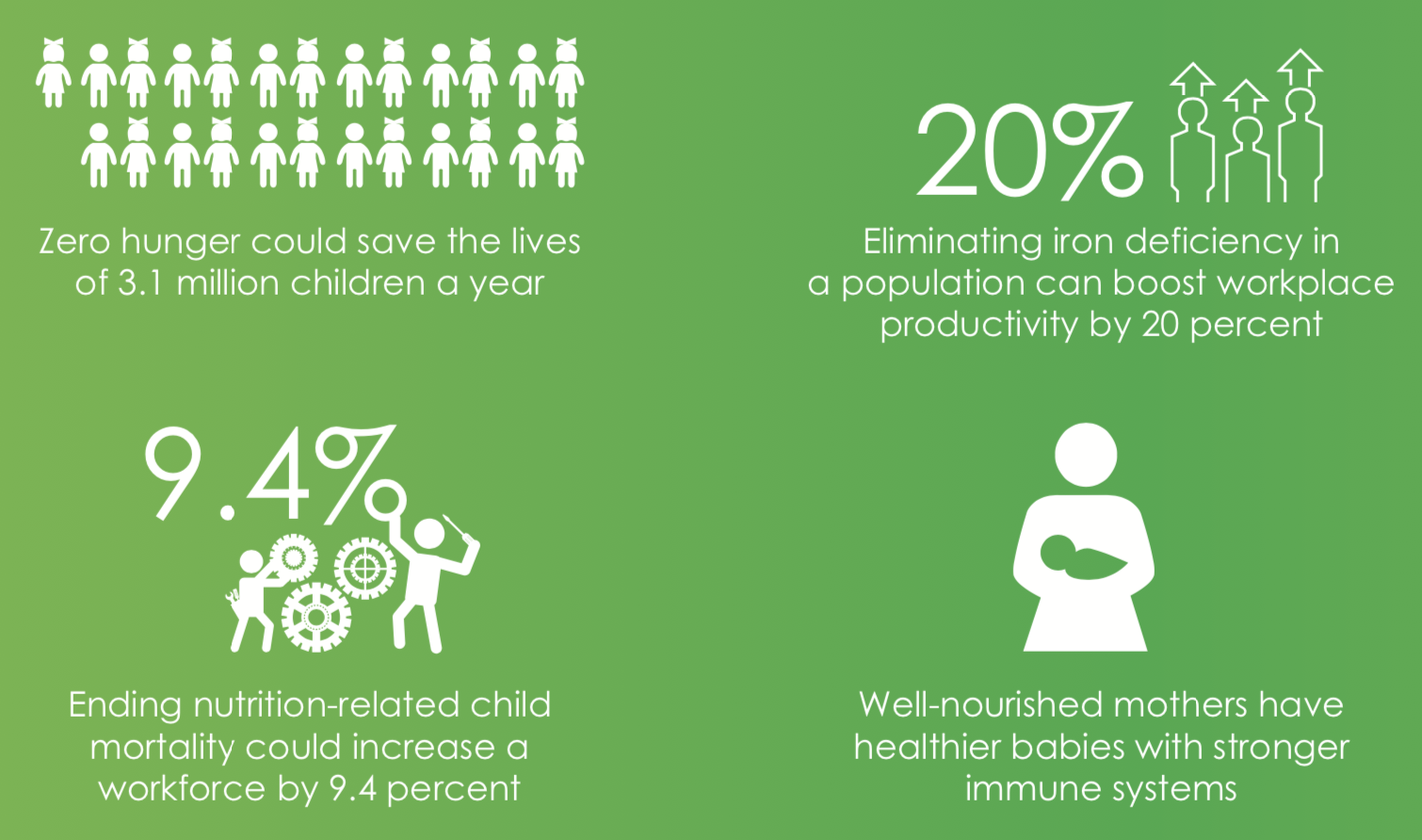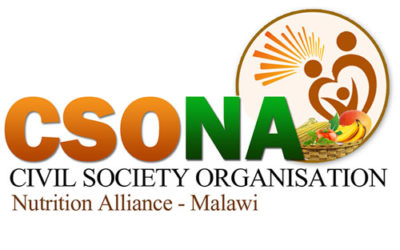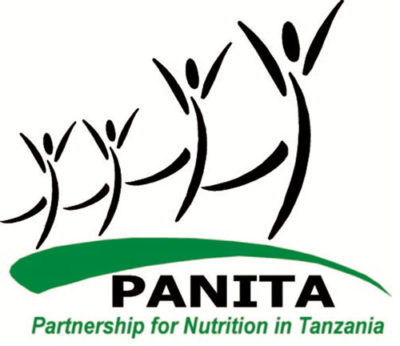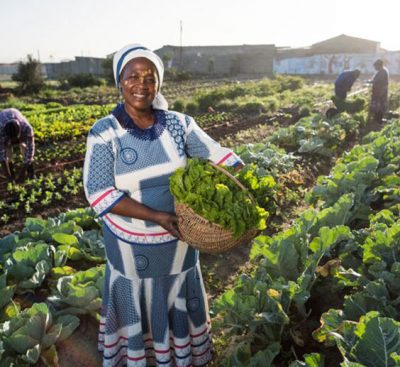
What’s in the food?
The month of October saw a lot of attention given to food, particularly around World Food Day, (WFD) that falls on 16th October of each year. And also, it is good to see that on the continent, we will be commemorating Africa Day of Food and Nutrition Security (ADFNS) on 30th October. Why all the attention? Because food is something we all need, yet many of us are not getting enough of the right foods in sufficient quantities.
It is therefore important to highlight and address some of the challenges and discuss what we can do, as well as take necessary actions to ensure that everyone, everywhere is well nourished. As we near the end of the first 5 years of the Sustainable Development Goals, (SDGs) it is important to ensure that we leave no one behind in the quest to end hunger and malnutrition worldwide.
We all need food to grow our bodies from conception, birth and growth into adulthood as well as maintaining healthy bodies throughout the life cycle. Different foods contribute differently to our bodies’ growth and wellbeing. Some foods give us more energy, others more of the proteins we need to build our bodies, whilst others provide us with the vitamins and minerals we need to support particular functions in the body and strengthen our immune systems. We therefore need to eat adequate amounts of diverse foods in order to grow well and stay healthy. When we do this, we are practising good nutrition because the food we are eating is able to keep us healthy and enable children to grow to their maximum potential. If we don’t nourish our bodies well, we become malnourished and subsequently poor growth and illness set in.
Studies have shown that malnutrition in all its forms, includes undernutrition (wasting, stunting, underweight), inadequate vitamins or minerals (often referred to as micronutrient deficiency), overweight, obesity, and resulting diet-related noncommunicable diseases is now a huge problem worldwide.

What’s in the numbers
Research figures below illustrate the sheer magnitude of the malnutrition challenge:
2 billion people do not have regular access to enough safe and nutritious food.
5 million babies (1 out of 7 newborns) are born with low birthweight.
149 million children under the age of 5 suffer from stunting, which is caused by chronic malnutrition and seen as children that are too short for their age.
5 million children under the age of 5 are affected by wasting which is manifested as low weight for height.
Also, numerous studies show that the numbers of overweight and obese people continue to increase in all regions across the globe, particularly among school-age children and adults:
- There are 40 million overweight children under five.
- Out of the 131 million overweight children aged 5-9, almost half (44%) of these children are obese
- A third (33%) of the 207 million overweight children aged 10-17 are obese
- 2 billion adults are overweight and 33% of these adults are obese
Achieving good nutrition
In October, the Trust joined Grow Great Campaign and attended a seminar that pulled together different stakeholder and champions of nutrition that are supporting and empowering pregnant mothers and newborns through the critical first 100o days. The emphasis is that stunting is not limited to the absolute lack of food alone but can result from poor maternal health, inadequate breast feeding among other things such as water, hygiene and sanitation.
Many countries are already struggling with the developmental and financial burden of malnutrition. Children that do not receive adequate nutrition, particularly in the first 1000 days of life become stunted and unable to develop to their full potential. Both their physical and cognitive development is impaired. As a result, they fall ill more often, typically spend fewer years in school and have a lower earning potential. The impact on the individual, families and entire societies is devastating, often leading to poverty that is perpetuated across generations. Stunted children are more likely to suffer later in life from conditions such as diabetes, hypertension and heart disease, further burdening already stretched health systems.
However, there is good news. The world produces enough food to feed everyone on the planet so no one needs to grow hungry. There are also interventions such as exclusive breastfeeding in the first six months of life and feeding children the minimally acceptable diet that have been proven to prevent malnutrition.
We need to fix our food systems to minimise food waste and facilitate access to affordable nutritious food in sufficient quantities for all. We also need to teach people how to eat properly. It’s not just about quantity but quality. Giving young children a starch-based porridge without other food groups on a regular basis may fill their tummies but it does not nourish them. Much of the obesity we see around us is the result of consistent consumption of energy-rich foods by people that live largely sedentary lifestyles.
The nature of the challenge is such that everyone needs to get involved, starting with you. You can learn more about the kind of food you need to eat and diversify your diet so that you get enough of these kinds of foods. Governments need to put in place policies and systems that encourage the production of the right kinds of food in sufficient quantities. Government sectors responsible for making sure food is safe must also do their part. Similarly, sectors involved in education must come on board to make sure people receive proper nutrition education.
Those responsible for water, hygiene and sanitation must work to ensure that food can be well cleaned and illnesses resulting from poor hygiene and sanitation can be minimised, allowing bodies to absorb the nutrients they need from food that is consumed.
The agricultural sector needs to be sensitive to nutrition in their practices.
Ministries of Trade, Gender, Transport etc. must all do their part.
Research institutions and academia need to support the rigorous research required to provide evidence that can be used to support decision making, policy formulation and good practice.
Private sector must also join the effort. Leaders at all levels, be they political, religious, social or traditional must also use their influence to promote good nutrition.
UN agencies and development partners are also needed to complement the efforts to address malnutrition.
The scale of the response needs to match the scale of the challenge. Ultimately, achieving good nutrition comes down to ensuring that in every home, everywhere, there is enough of the right kinds of food in sufficient amounts on the plate of every single child, adolescent and adult.
Let’s join hands to work towards ending hunger and eliminating all forms of malnutrition. Educate yourself and take action!










 The Trust supports and mobilises civil society networks on issues of ending child marriage, ending violence against children, ending female genital mutilation and promoting children’s rights, to carry out advocacy and action across Africa. Special focus is placed on Malawi, Mozambique, Tanzania and Zambia where child marriage continues to be a problem largely driven by poverty, gender inequality, harmful traditional practices, conflict, low levels of literacy, limited opportunities for girls and weak or non-existent protective and preventive legal frameworks.
The Trust supports and mobilises civil society networks on issues of ending child marriage, ending violence against children, ending female genital mutilation and promoting children’s rights, to carry out advocacy and action across Africa. Special focus is placed on Malawi, Mozambique, Tanzania and Zambia where child marriage continues to be a problem largely driven by poverty, gender inequality, harmful traditional practices, conflict, low levels of literacy, limited opportunities for girls and weak or non-existent protective and preventive legal frameworks.




 Education is a fundamental right for all children, which is also a vehicle for social, economic and political transformation in communities, countries and the African continent at large. Recent studies indicate a lack of progress in some of the critical commitments aimed at improving education quality, access, retention and achievement, particularly for girls. In most African countries, girls may face barriers to learning, especially when they reach post-primary levels of education. By implementing multi-dimensional approaches to education which includes core education, personal development, life skills and economic competencies, the Trust partners with funding partners, governments, civil societies and the private sector to improve education access.
Education is a fundamental right for all children, which is also a vehicle for social, economic and political transformation in communities, countries and the African continent at large. Recent studies indicate a lack of progress in some of the critical commitments aimed at improving education quality, access, retention and achievement, particularly for girls. In most African countries, girls may face barriers to learning, especially when they reach post-primary levels of education. By implementing multi-dimensional approaches to education which includes core education, personal development, life skills and economic competencies, the Trust partners with funding partners, governments, civil societies and the private sector to improve education access.

 The Nutrition and Reproductive, Maternal, New-born, Child and Adolescent Health and Nutrition, (RMNCAH+N) of the Children’s Rights and Development Programme aims at promoting the Global Strategy for women, children and adolescents’ health within the Sustainable Development Goals (SDG) agenda. The strategy emphasises on the importance of effective country leadership as a common factor across countries making progress in improving the health of women, children and adolescents.
The Nutrition and Reproductive, Maternal, New-born, Child and Adolescent Health and Nutrition, (RMNCAH+N) of the Children’s Rights and Development Programme aims at promoting the Global Strategy for women, children and adolescents’ health within the Sustainable Development Goals (SDG) agenda. The strategy emphasises on the importance of effective country leadership as a common factor across countries making progress in improving the health of women, children and adolescents. Through its Early Childhood Development (ECD) plan, The Trust will seek to put into action the new science and evidence Report that was presented by Lancet Series on Good and early development – the right of every child. This will be achieved by mobilising like-minded partners to contribute in the new science and evidence to reach all young children with ECD. The Trust’s goal is to be a catalyst for doing things differently, in particular, to rid fragmentation and lack of coordination across ECD sectors. In response to evidence showing the importance of political will in turning the tide against the current poor access and quality of ECD. Even before conception, starting with a mother’s health and social economic conditions, the early years of a child’s life form a fundamental foundation that determines whether a child will survive and thrive optimally.
Through its Early Childhood Development (ECD) plan, The Trust will seek to put into action the new science and evidence Report that was presented by Lancet Series on Good and early development – the right of every child. This will be achieved by mobilising like-minded partners to contribute in the new science and evidence to reach all young children with ECD. The Trust’s goal is to be a catalyst for doing things differently, in particular, to rid fragmentation and lack of coordination across ECD sectors. In response to evidence showing the importance of political will in turning the tide against the current poor access and quality of ECD. Even before conception, starting with a mother’s health and social economic conditions, the early years of a child’s life form a fundamental foundation that determines whether a child will survive and thrive optimally.